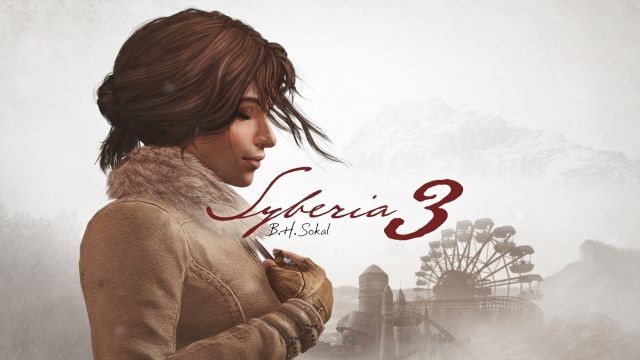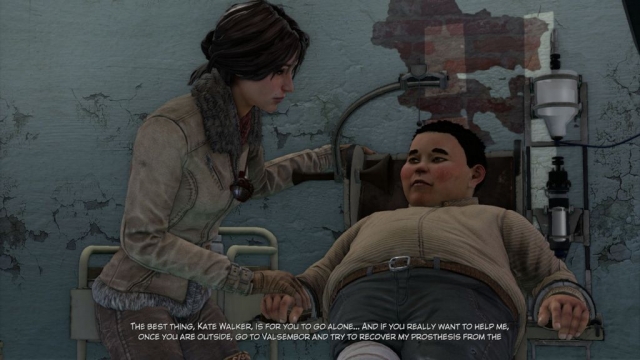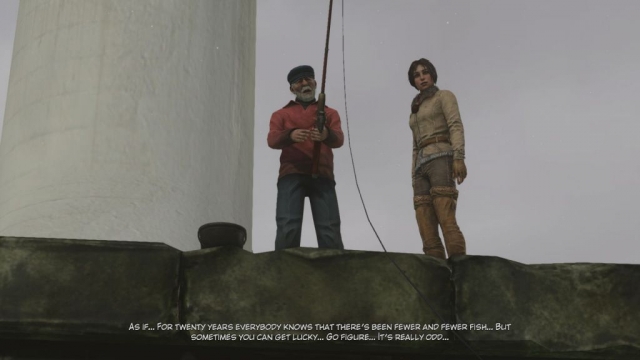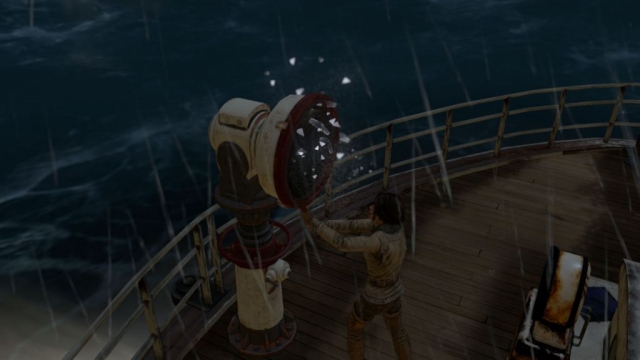Syberia 3

Syberia 3 is the sequel to Syberia (released in 2002) and Syberia II (2004). It was created by “B.H. Sokal,” which appears to be the Sokal way of saying that Benoit and his son Hugo were involved. Since Benoit was also the driving force behind the first two games in the series, one might consider Syberia 3 to be an official sequel rather than a simple cash grab by a new developer. Unfortunately, despite the pedigree, something went terribly wrong during the development of the game, to the point where it didn’t even reach the not-so-lofty heights of “cash grab” let alone “good” or “playable” or “not embarrassing.”
Despite the long layoff for the series, Syberia 3 kicks off only weeks after the conclusion of Syberia II. You’re still in control of Kate Walker, but it’s sort of a parallel universe Kate Walker, where the U.S. government considers you to be a subversive, and you’re wanted for embezzlement. Meanwhile, you come into contact with a nomadic tribe of youkols, who for some unfathomable reason the local militia is trying to capture. They’re also — just as unfathomably — trying to capture you. That sets up your goal in the game: to help the youkols with their migration while staying out of the clutches of the bad guys (who look like they’d be right at home in a James Bond movie, but not so much in a Syberia game).
Sadly, while the premise for the game is silly, the writing for the campaign is even worse. The Voralbergs are nowhere to be seen, Syberia isn’t mentioned even once, and your character — with a few minor adjustments — could be anyone, which means the connection between Syberia 3 and the earlier games is tenuous at best. And then there’s the dialogue, which is stilted and clunky — and acted poorly (this despite the fact that Sharon Mann was brought back to reprise her role as Kate Walker, but who instead sounds like Kate Walker’s distant aunt) — the complete lack of motivation for the bad guys, and the infuriating ending, which apparently assumes that the game is going to sell so well that there’s going to be a Syberia 4.
To add insult to injury, one of the first things you see when you start the game is, “The game is more enjoyable if you play using a controller.” Yes, that’s exactly what every PC gamer wants to see. Controller interfaces are the bane of our existence, and Syberia 3 doesn’t even have a good one. Simple things like just moving Kate around are a chore. Syberia 3 uses a scheme close to those employed by Telltale’s adventures, where you use the WASD keys to drive Kate around, and camera angles shift as you move from scene to scene. Only in Syberia 3, the camera angles are frequently awful, so you can rarely tell where you’re going, where the exits are, and what things might be in your way. There is also a fun “feature” when moving between scenes, where the game forgets which direction you were walking, and you immediately turn around and return to the scene you came from.
The rest of the interface is at best mediocre. You only see hotspots when Kate walks close to them, so it takes forever to wander around and find things (and, worse, these searches are frequently dull because of how big and empty the world is). The cursor is pale white, and it’s barely visible most of the time, making it difficult to try and click on things (but “luckily” the programming for the game is so inept that the brighter hardware cursor frequently shows up along with it, saving the day). You can’t skip dialogue or cut scenes. There isn’t any way to reconfigure the hotkeys. And best of all, you’re not allowed to save your game. There is only one autosave for Syberia 3, and the game decides when you’ve done something important enough to warrant it. And this saving criteria doesn’t include exiting the game, so you have to be careful when you leave so you’re not required to repeat a bunch of stuff when you return.
Luckily, the puzzles are decent. Syberia 3 uses a mix of inventory puzzles (where you pick things up and then figure out where to use them) and machinery puzzles (where you have to press buttons and flip switches to get machines running), and they’re in line with the puzzles from the first two games. Unfortunately, the interface is so poor that it adds difficulty where it’s not intended, especially early in the game when you have to figure out — without any help — how everything works. As an example, at one point you have to open two gates. One gate opens when you click and drag on a lever. The other gate has a lever, too, but if you click and drag on it, nothing happens. This confused me for a long time, until I finally realized that I just had to click on the second lever to pull it. Why is it different for the two gates? Because the “programmers” (a word I’m using loosely here) weren’t paying attention to details or consistency, a theme that infuses the entire game.
I could go on at some length about how much I didn’t like Syberia 3, but you probably get the idea by now. And just my luck — it took me about 18 hours to slog my way through the game, so the worst adventure I’ve played in a long time was also the longest. Yay. Anyway, Syberia 3 is a game to avoid. It has no redeeming qualities — whether you’re a fan of the series or not — and it’s not worth anything close to its bloated retail price. Just stay away, please, so Microids doesn’t get any ideas about subjecting us to a Syberia 4 (or maybe IV, since they seem to be alternating their numbering scheme).
Reviewed By: Steven Carter
Publisher: Microids
Rating: 51%
——————————————————————————–
This review is based on a digital copy of Syberia 3 for the PC provided by Microids.
 Game Over Online
Game Over Online











